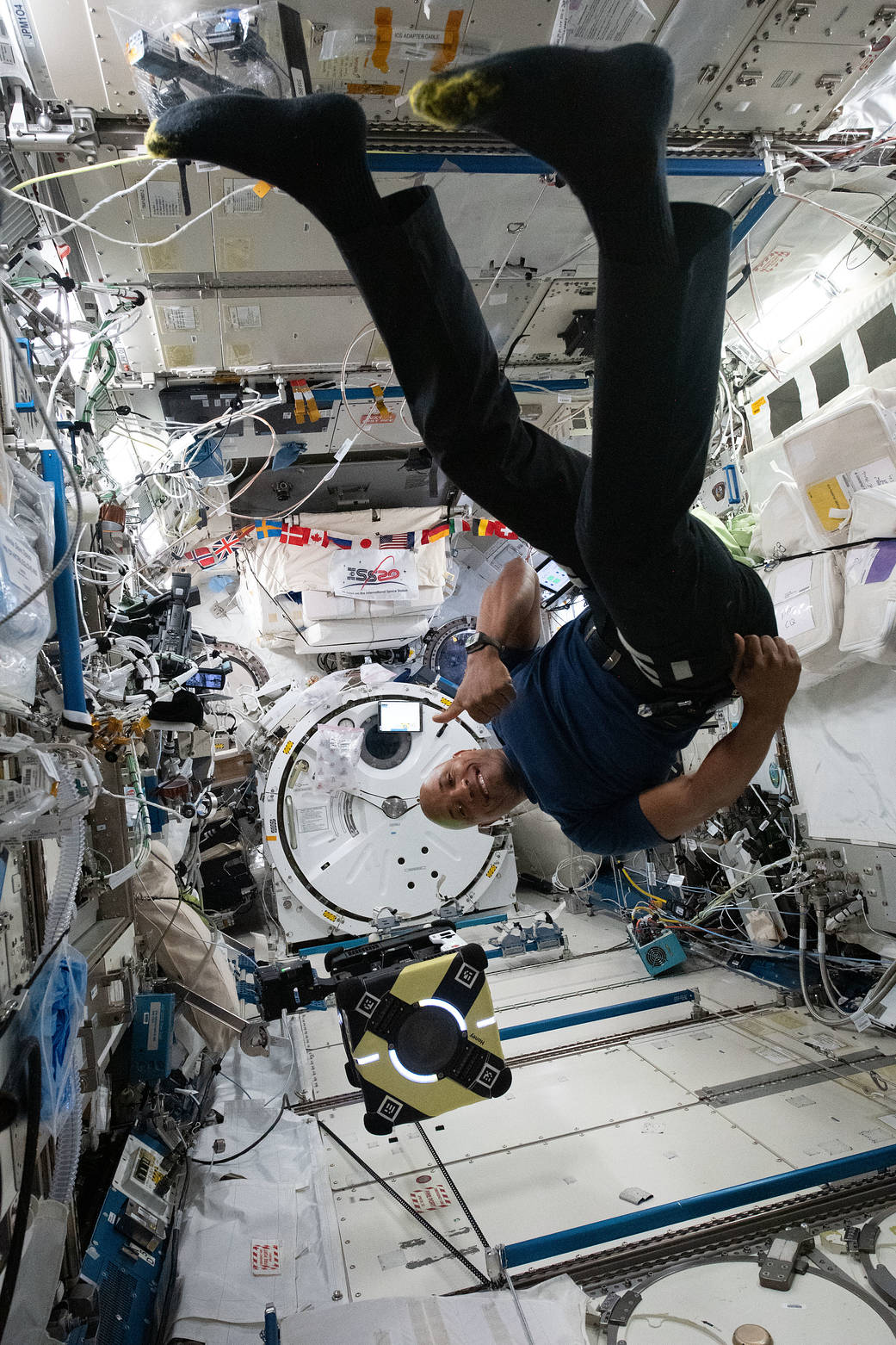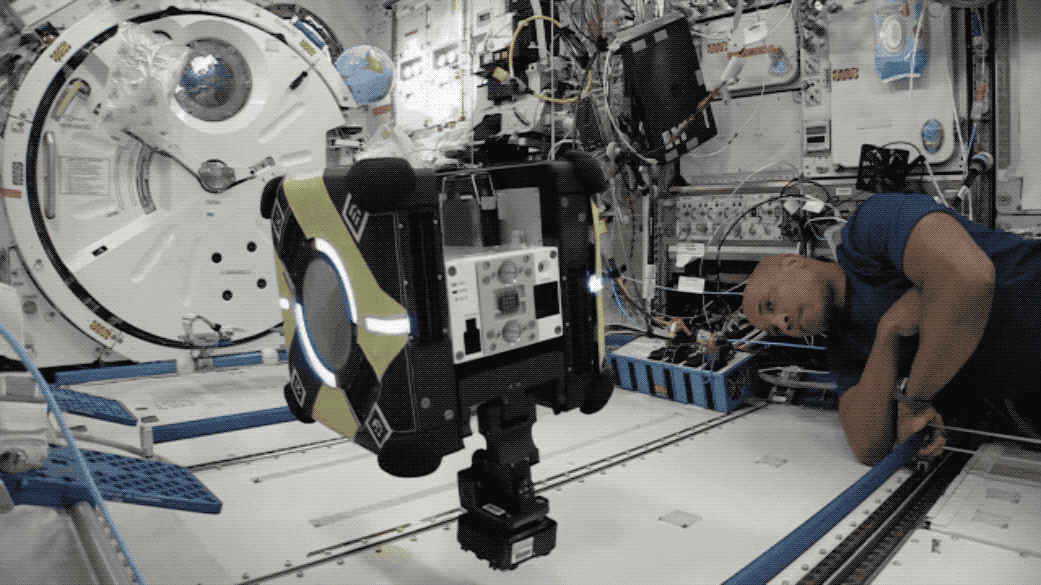NASA astronaut Victor Glover works with an Astrobee robot, named “Honey,” to test a mechanical adhesive technology inspired by gecko feet. Astrobee’s facility, managed by NASA’s Ames Research Center in California’s Silicon Valley, provides guest scientists with a platform for zero-gravity robotics research inside the International Space Station. This technology, developed by Stanford University, in Stanford, California offers a new capability for free-flying robots in space. Dubbed the gecko gripper, this device allows robots to grab onto surfaces – without applying force to adhere – and then detach on demand. This simplifies grasping and manipulating objects in space and will provide more places for robots to perch, even outside spacecraft, as such adhesives can be used in the vacuum of space. This technology will pave the way for future, exterior spacecraft maintenance and exploration tasks done by robots. The enhanced capability for robotic assistants means crew can spend less time on routine chores such as unpacking supplies or fetching tools, and focus more on tasks only humans can do.
1 min read




























